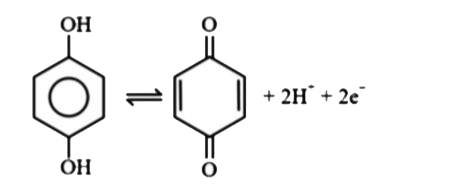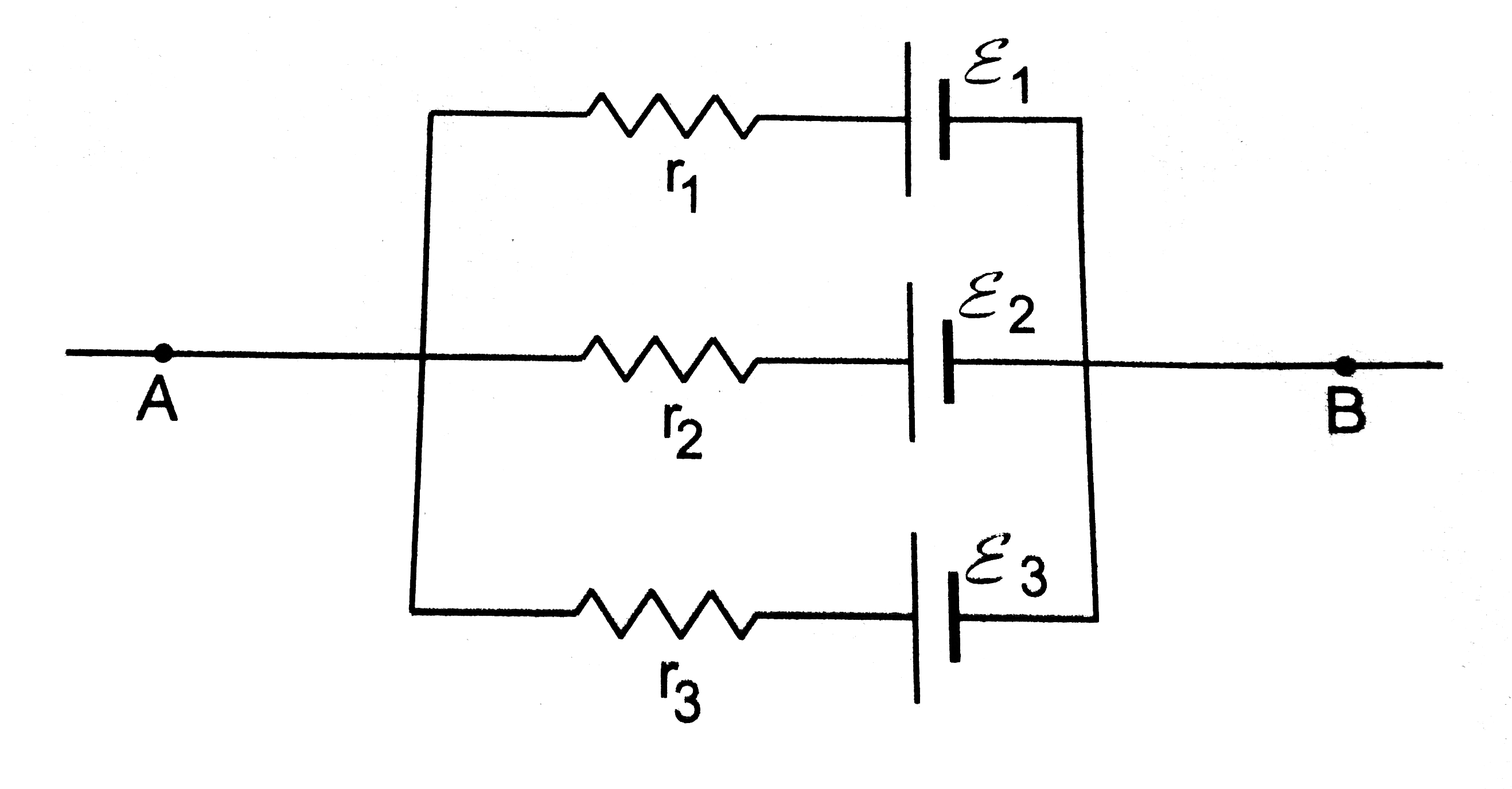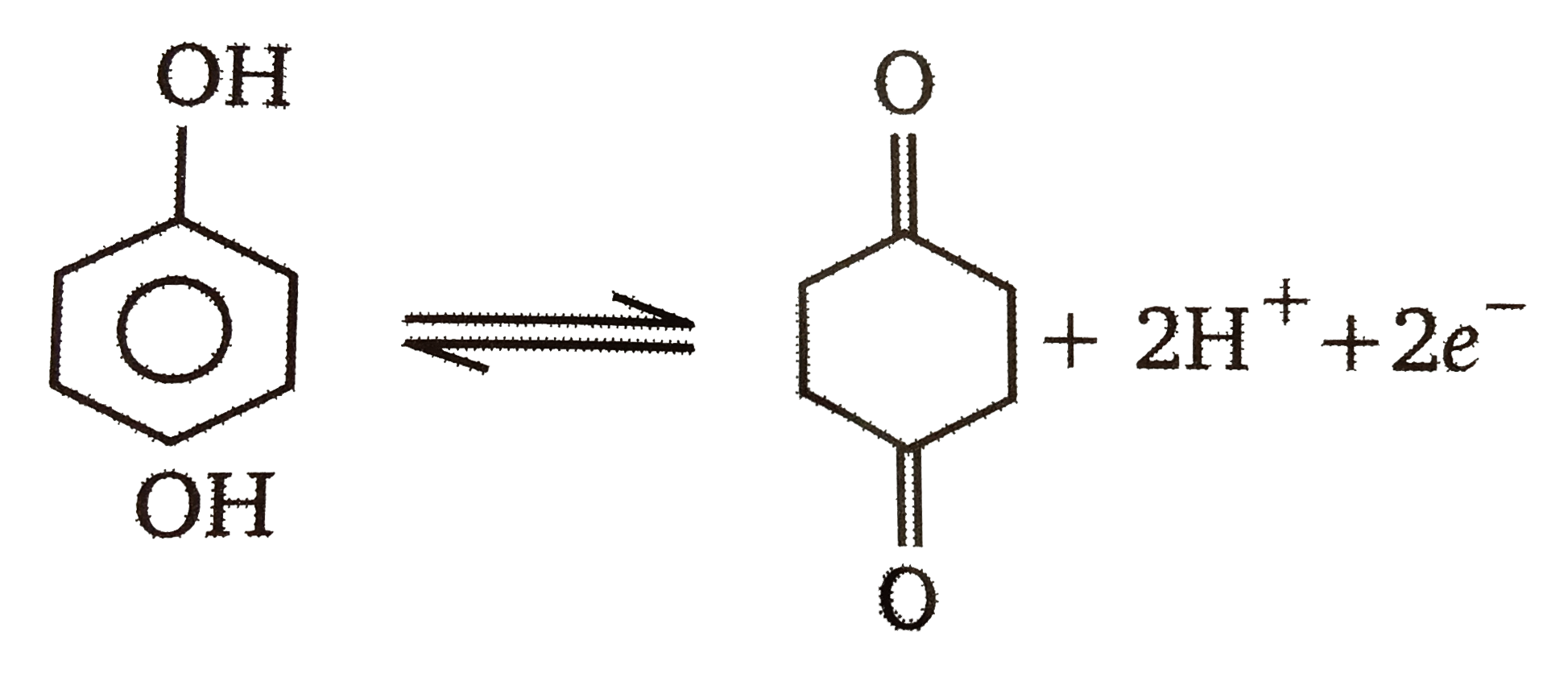pH=2,E0क्विनहाइड्रोन=1:30V,Eक्विनहाइड्रोन होगा:

1.36V
1.32V
1.42V
1.26V
The correct Answer is:C
E=E0−0.0592log[H+]2=1.30
−0.0592log(10−2)2
=1.30+0.2362=1.418V
Topper's Solved these Questions
Similar Questions
In the circuit shown in figure ,(ε)1=3V,(ε)2=2V,(ε)3=1Vandr1=r2=r3=1(Ω).Find the potential difference between the points A and B and the current through each branch.

View SolutionAnswer, whether under standard conditions, the following reactions are possible or not:
(i) Will copper reduce Ag+ to Ag? Given E∘Ag+/Ag=0.799 volt,E∘Cu2+/Cu=−0.337 volt
(ii) Will Fe3+ be reduced to Fe2+ by Sn2+ ions? given
Fe3+∣Fe2+=0.771 voltSn2+∣Sn4+=−0.250 volt
(iii) would you use a silver spon to stir a solution of Cu(NO3)2 ?
View Solution
Knowledge Check
At pH=2,E∘(Quinhydrone)=1.30V,EQuinhydrone will be :
 A1.36 VB1.32 VC1.42 VD1.26 V
A1.36 VB1.32 VC1.42 VD1.26 VGiven :
Ec−.Ag⊕∣Ag=0.80V,Ec−.Mg2+∣Mg=−2.37V,
Ec−.Cu2+∣Cu=0.34V,Ec−.Hg2+∣Hg=0.79V
Which of the following statements is / are incorrect ?AAgNO3 can be stored in copper-vesselBCu(NO3)2 can be stored in magnesium vesselCCuCl2 can be stored in silver vesselDHgCl2 can be stored in copper vesselA variable, opposite external potential(Eext is applied to the cell :Zn∣∣Zn2+(1M)∣∣∣∣Cu2+(1M)∣∣Cu, of potential 1.1 V.respectively electrons flow from :
Aanode to cathode in both casesBanode to cathode and cathode to anodeCcathode to anode in both casesDcathode to anode and anode to cathode.
I2(s)∣I−(0.1M) half cell is connected to a H+ (aq)|H2(1 bar)|Pt half cell and e.m.f. is found to be 0.7714 V. If E∘I2∣I−=0.535 V, find the pH of H+∣H2 half cell.
View SolutionFor the reduction of NO−3 ion in an aqueous solution, is +0.96V. Values of for some metal ions are given below :
V2+(aq)+2e−→V, E∘=−1.19V
Fe3+(aq)+3e−→Fe , E∘=−0.04V
Au3+(aq)+3e−→Au , E∘=+1.40V
Hg2+(aq)+2e−→Hg , E∘=+0.86V
The pair(s) of metals that is(are) oxidised by NO−3 in aqueous solution is(are) :
View SolutionFor, I2+2e→2I−, standard reduction potential =+0.54 volt. For, 2Br−→Br2+2e− standard oxidation potential =−1.09 volt. For Fe→F2++2e−, standard oxidation potential =+0.44 volt. Which of the follwoing reactions is non-spontaneous ?
View SolutionGiven:
(i) Cu2++2e−→Cu,E∘=0.337V
(ii) Cu2++e−→Cu+,E∘=0.153V
Electrode potential, E∘ for the reaction, Cu++e−→Cu, will be
View SolutionIf E∘Fe2+/Fe=−0.440V and E∘Fe3+/Fe2+=0.770V, then E∘Fe3+/Fe is -
View Solution
